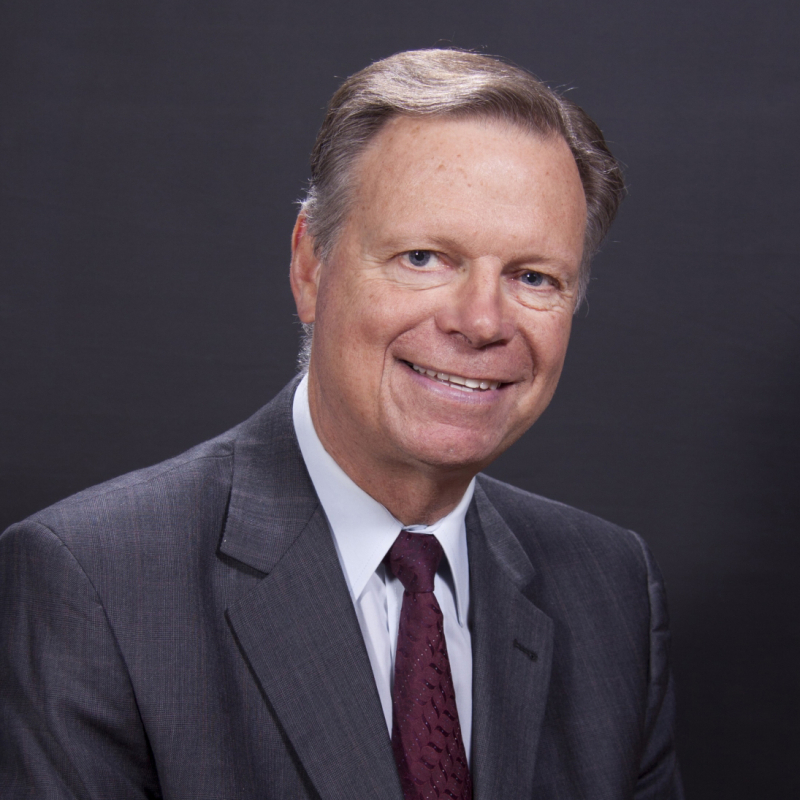
Mark Finley, DD
Why Jesus’ Sabbath Keeping Matters
For a Jewish culture steeped in tradition, formalism and ritual, Jesus’ Sabbath keeping practices were shocking. For those seeking heaven’s richest blessings they were refreshing. Jesus reframed the Sabbath with a newness, a freshness, and a spiritual vitality. For the Savior, Sabbath was a day to find wholeness in a broken world. It was a refuge – an oasis – a place in time for all humanity to rest in His love, discover strength in His Word, experience His presence, and participate in His mission.
The gospels reveal Christ worshipping in the synagogue, walking with His disciples in nature, healing the sick, eating with his friends, and visiting with His followers on the Sabbath. One of the most inspiring pictures of Jesus on the Sabbath is in Luke 4:16, “So He came to Nazareth where He had been brought up and as His custom was, He went in the synagogue on the Sabbath day and stood up to read.” Jesus’ custom, His regular practice, was to participate in Sabbath worship. On this Sabbath, Jesus read from Isaiah 61:1-2 and announced His Messianic mission. It is significant that it was on Sabbath that Jesus read the words, “He has anointed me to preach the gospel to the poor, He has sent me to heal the brokenhearted, to preach deliverance to the captives and recovery of sight to the blind, to set at liberty those that are oppressed, to preach the acceptable year of the Lord.”
Commenting on this passage Ellen White states, “Jesus stood before the people as a living expositor of the prophecies concerning Himself. Explaining the words He had read, He spoke of the Messiah as a reliever of the oppressed, a liberator of captives, a healer of the afflicted, restoring sight to the blind, and revealing to the world the light of truth. His impressive manner and the wonderful import of His words thrilled the hearers with a power they had never felt before. The tide of divine influence broke every barrier down; like Moses, they beheld the Invisible. As their hearts were moved upon by the Holy Spirit, they responded with fervent amens and praises to the Lord.”
– The Desire of Ages, p. 237
On Sabbath, the living Christ speaks forgiveness to our hearts, anoints us with His Spirit, heals our brokenness, and sets us at liberty from the bondage of sin so we can proclaim the glory of His Name. For Jesus, Sabbath worship was much more than a perfunctory act or legalistic requirement. It was the joy of entering the Shekinah glory of the Father’s presence to praise and worship to receive strength for the journey ahead. The Sabbath was a day of spiritual renewal and the infilling of the Spirit’s power.
Jesus’ Sabbath Healing Ministry
It is fascinating to note that Jesus performed more of His healing miracles on Sabbath than on any other day. There are at least three reasons for this:
- Jesus wanted to reveal the true meaning of the Sabbath. Sabbath is a day of wholeness. It is a day that God longs to make us whole physically, mentally, emotionally and spiritually.
- Sabbath is a day of service. God has called us from the claustrophobic confines of our own self-inflated importance to the largeness of service. Jesus lived to bless, and His Sabbath miracles demonstrated that desire.
- Sabbath is a memorial of creation and God is the God of re-creation. Jesus on Sabbath revealed the Father’s love and power in creating health where there was once sickness.
Let’s get a clearer view of Christ’s Sabbath keeping practices as we study these seven miracles more clearly. Keep in mind that when the gospel writers discuss Jesus’ Sabbath keeping practices the vast majority of times it is in the context of the healing miracles.
Sabbath is a glorious day of praise and worship of the One who created us.
The Invalid at Bethesda: John 5:1-15
The Pool of Bethesda is in Jerusalem just inside the Sheep Gate on the way to the Temple. Bethesda means “house of mercy.” Evidently Jesus was on His way to Sabbath worship when he saw a man who had been in a horrible condition for 38 years. In describing the healing of the man at the Pool of Bethesda, Ellen White describes Jesus “walking alone in apparent meditation and prayer” when He saw “one case of supreme wretchedness.” – Desire of Ages p. 201, 202
It was the Sabbath and Jesus knew that this act of healing would generate significant controversy among the Pharisees. The Jewish priests had 39 different regulations governing acceptable work on the Sabbath. These “meaningless requirements” and “senseless restrictions” were an “intolerable burden.” (DA 204) We are told that Jesus “by His words and by His works of mercy … was breaking the oppressive power of the old traditions and man-made commandments and presenting the love of God in its exhaustless fullness.” – Desire of Ages p. 204.
Seeing His hopelessness, Jesus asked the poor sufferer, “Will you be made whole?”– John 5:8
It was impossible for the man to make himself whole. By faith He responded to the Savior’s command, “Rise, take up thy bed and walk.” – John 8:8-9
New life flowed into every nerve and tissue of His body. Miraculously he was made whole. By faith he accepted Christ’s word and acted upon it. This Sabbath miracle, as are each of the Sabbath healings, is intimately tied to a deeper spiritual truth. Accepting the Word of God by faith and acting upon it we are made whole.
The Pharisees were upset not necessarily because Jesus healed the man but because he carried his bed on the Sabbath (John 8:8-12). Jesus had violated a manmade tradition and totally set aside a human regulation that had no relationship to a divine command regarding Heaven’s purpose for the Sabbath.
Jesus, the Lamb of God, walked through the Sheep Gate and brought wholeness or salvation to a hopeless man. The point of this Sabbath miracle is that Jesus is both our Creator and our Redeemer. The One who made us can recreate us and make us whole again. He meets us where we are, sees and knows our need, redeems us by His grace and turns our despair into hope.
In a masterful statement concluding her discussion on the healing at Bethesda, Ellen White describes God’s true purpose for the Sabbath as providing opportunity for “healthful rest, worship and holy deeds.” – Desire of Ages p. 207
God’s ideal for the Sabbath includes all three. Any approach to understanding Christ’s ministry on the Sabbath that neglects or overlooks this divine trilogy misunderstands the Sabbath’s richness and divine purpose. We experience the fullness of the Sabbath blessing when we enter the joy of worship, experience healthful rest, and selfless service.
The Demoniac in the Synagogue: Mark 1:21-28
The very essence of the Sabbath is worship. John the Revelator declares, “You are worthy Lord to receive glory and honor and power because you created all things.” – Revelation 4:11
Sabbath is a glorious day of praise and worship of the One who created us. Resting from our labors we completely trust in the works of Christ both for our standing before God (justification) and our growth in grace (sanctification).
Jesus our divine example entered the joy of worship each Sabbath. Sabbath worship was Jesus “custom” or “common practice.” It is extremely fascinating that at least five of His Sabbath miracles are in connection with Sabbath worship. Mark chapter 1 describes Jesus as teaching with authority in the temple on Sabbath morning. His hearers are astonished. (Mark 1:21, 22) Suddenly the worship service is interrupted. A mad man rushes forward shrieking in terror. The demon possessed man cries out, “Let us alone.” – Mark 1:24
The devil attempts to disrupt the service and prevent the worshippers from accepting Jesus’ divine claims. The demon is miraculously cast out during this worship service in the synagogue.
We are told that, “The man who had been possessed stood before the wondering people happy in the freedom of self-expression. Even the demon had testified to the divine power of the Savior. The man praised God for his deliverance.” – Desire of Ages p. 256
Jesus’ fame now spread through the land and this miraculous healing launched Jesus’ Galilean ministry (Mark 1:28). The purpose of this Sabbath deliverance is clear. It serves to reveal God’s love for this demon-possessed man and attest to the credibility of Jesus’ claims as the Messiah. But note this miracle is spontaneous, the healing is instant, and it takes place in the context of worship and serves a much larger purpose than the individual healing.
Peter’s Mother-in-Law: Mark 1:29-31
Leaving the Sabbath worship, Jesus quietly makes His way to Peter’s home in Capernaum on the shores of the Sea of Galilee for a few hours of “healthful rest”. There He discovers Peter’s mother-in-law is extremely ill. It is Sabbath and Jesus has entered the home of a friend to share a simple Galilean meal and rest on Sabbath afternoon from His exhausting labors.
Sensing an urgent need, He ministers to this sickly woman and she is miraculously healed. Disease flees before Him. It is interesting to note that Mark’s gospel then says that “immediately the fever left her, and she served them.” – Mark 1:31
In other words she fixed them Sabbath lunch. Jesus met the need of a friend’s mother-in-law who then ministered to the entire group. She both received and gave a blessing. This miracle was a spontaneous event, ministering to an individual need in a private home on Sabbath afternoon after worship. Notice once again we have three elements in this story. It occurs immediately after Sabbath worship, Jesus has come to Peter’s home for restorative rest, and He finds joy in service.
As word spread throughout the region of both the miraculous deliverance in the synagogue and the healing of Peter’s mother-in-law, scores of people traveled to Capernaum to be healed. Mark’s gospel is very specific that Jesus waited until after sunset to heal the crowds who came. “Now at evening when the sun had set, they brought to Him all that were sick and those who were demon possessed.” – Mark 1:32
Could Mark’s narrative possibly be a model for the church today? “From homes, the shops, the market places the inhabitants of the city pressed toward the humble dwelling that sheltered Jesus…hour after hour they came and went…” – Desire of Ages p. 259
It might be argued that the reason they waited until after the Sabbath was fear of the condemnation of the Pharisees. This may be partly true. But in my view, there is a deeper reason. The gospel narrative is teaching us that the exhausting labor of healing the masses is best done after the Sabbath unless it is an absolute necessity. Individual acts of meeting human need are well within the context of the Sabbath experience but in Mark 1 Jesus worshipped, rested, fellowshipped with friends, and served.
Jesus placed a priority on Sabbath worship but when He confronted human need He unselfishly ministered to individuals. But He waited until after Sabbath to enter the tireless toil of healing the masses hour after hour.
All true medical missionary work seeks to evoke a response of faith in the living Christ.

The man with a withered hand: Mark 3:1-6
As Jesus entered the synagogue on Sabbath, He immediately saw a man with a withered hand. Jesus desired in church this Sabbath to powerfully illustrate that human beings are of supreme value in the sight of God and that meeting a need on Sabbath is in harmony with the Creator’s purpose for Sabbath. Commenting on this experience, Ellen White says, “Every false religion teaches its adherents to be careless of human needs, sufferings, and rights. The gospel places a high value upon humanity as the purchase of the blood of Christ, and it teaches a tender regard for the wants and woes of man. The Lord says, “I will make a man more precious than fine gold; even a man than the golden wedge of Ophir.” Isaiah 13:12.– Desire of Ages p. 286
Notice that this miraculous Sabbath healing follows the pattern outlined throughout the gospels. It is an unplanned, miraculous, instantaneous healing meeting a human need in the context of worship to illustrate a deeper spiritual truth. In this instance the deeper spiritual truth is that human beings are of more value than an ox that has fallen into a ditch. They are of inestimable worth in God’s sight.
The man born blind: John 9:1-41
The miraculous Sabbath healing of the man born blind begins with these words, “Now as Jesus passed by, He saw a man that was blind from birth.” – John 9:1
Our compassionate Christ would not pass by a man born blind. He did not allow the Pharisaical human restrictions prevent Him from healing an individual on the Sabbath. Scripture makes plain the significance of this miracle. Jesus reveals that the miracle was performed that the “works of God should be revealed” in this poor blind man.- John 9:3
It is fascinating to observe that while Jesus was still in the vicinity of the temple during the Feast of Tabernacles, He placed moistened clay on the blind man’s eyes and told him to wash in the Pool of Siloam. There is great significance in this simple approach. Inspiration puts it this way, “The cure could be wrought only by the power of the great healer, yet Christ made use of the simple agencies of nature.”– Desire of Ages p. 824
Commenting still further on the relationship between Heaven’s natural remedies, miraculous healing, and trust in God, Ellen White provides this instruction for God’s church today. “And we should teach others how to preserve and to recover health. For the sick we should use the remedies which God has provided in nature, and we should point them to Him who alone can restore. It is our work to present the sick and suffering to Christ in the arms of our faith. We should teach them to believe in the Great Healer. We should lay hold on His promise and pray for the manifestation of His power. The very essence of the gospel is restoration, and the Savior would have us bid the sick, the hopeless, and the afflicted take hold upon His strength.” – Desire of Ages p. 824-825
There is another significant lesson Jesus longed to teach in this miracle. The Pool of Siloam is the very pool from which the ceremonial waters representing life and healing were carried to the Temple during the Feast of Tabernacles. The main themes of the Feast of Tabernacles were water and light. Here Jesus, as the Light of the World, heals a blind man and tells the man to wash in the Pool of Siloam. The healing happened at least two-thirds of a mile from where Jesus was located. This clearly indicates that His Word is as good as His presence. When Jesus speaks the Word of healing, it is so.
Here is the significance of this Sabbath miracle. Jesus is the light of the world. Seeing Him our darkness flees away, and we see clearly divine realities. Jesus is also the healing water which cleanses our hearts and transforms our lives. This spontaneous miracle illustrated that Jesus the Lord of the Sabbath is the One who enables us to truly see eternal truths and who genuinely heals the blindness of our hearts. His use of natural remedies encourages us to teach people the simple principles of health.
Most of all, this story urges us to do “follow up” like Jesus to provide more, much more than the initial treatment of an ailment. In John 9:35, Jesus seeks out the healed man, reveals He is the Messiah, and evokes a response of faith as the man joyfully testifies, “Lord, I believe!” and worships Christ. All true medical missionary work seeks to evoke a response of faith in the living Christ.
The crippled woman: Luke 13:10-17
As Jesus was teaching in the synagogue on Sabbath, He noticed a “woman who had a spirit of infirmity for eighteen years and was bent over and could in no way raise herself up.” – Luke 13:10-11
Christ’s concern and loving care would not allow Him to overlook the suffering of a poor woman right in front of Him during the Sabbath worship experience when He had the power to do something about her disease. When He “laid His hands on her,” she was “made straight and glorified God.”– Luke 10:13
Although there are minor variations, the pattern of Jesus’ Sabbath healings is very similar in the gospel narrative.
- They are spontaneous acts meeting a human need.
- Most often they are linked to a Sabbath worship experience.
- Regularly they are connected with a direct appeal to salvation.
- They do not require a great deal of labor or hours of toil.
They are generally instantaneous, divine acts of miraculous grace and power.
The man with dropsy: Luke 14:1-4
The last two of these seven Sabbath miracles of healing are recorded by Luke, a physician. Luke has already communicated the priority Jesus placed on Sabbath worship (Luke 4:16). Jesus regularly participated in Sabbath worship services (Luke 4:31, 6:6, 13:10).
In this story, Jesus accepted an invitation to dine with the Pharisees in a private home. Obviously, this must have been a Sabbath lunch since it would have been unconscionable for the Pharisees not to have attended worship on Sabbath. Although not mentioned in the text, it is highly likely that Jesus worshipped with them and then accompanied them home for a meal.
In the privacy of the home, Jesus observed this man with dropsy. Dropsy is a serious disease where the body severely swelled due to excess fluids. Today we would term this condition “edema” often due to congestive heart failure. This man was extremely ill and needed lifesaving treatment. Commenting on those coming to Jesus in Capernaum, Ellen White observed, “They were in every condition of helplessness and approaching death. Some were burning with fevers, others were paralyzed, stricken with dropsy, blind, deaf, and lame.” – Spirit of Prophecy, Vol 2, p. 181
While the Pharisees seemed to care more for an ox that fell into a ditch than a suffering, dying man with a dread disease, Jesus illustrated God’s love in action by healing the man. The lesson is clear. Faced with indescribable human suffering, Jesus never turns away from human need. He unselfishly ministers to relieve suffering when He is confronted with it even on the Sabbath. But His purpose is always larger than individual healing. The Savior longs to make people whole physically, mentally, emotionally and spiritually.
Conclusion
The seven healing miracles of Jesus reveal a Christ who was genuinely concerned about relieving physical suffering. There are times when Seventh-day Adventist medical personnel are called to work in healthcare institutions on Sabbath. This Sabbath ministry of unselfish love and service is part of God’s plan in revealing His grace to humanity. Nevertheless, Christ placed priority on worship and warns us against incessant labor and the neglect of restoring rest.
Jesus’ Sabbath keeping matters because in His life He reveals Heaven’s model to receive God’s abundant Sabbath blessings. He is our example in all things, especially in Sabbath keeping. When Christ gave humanity the Sabbath in Eden, He stated that it would serve three specific purposes: blessing, sanctification, and rest (Genesis 2:1-4).
To bless something is to give it intrinsic value that it does not have otherwise. It means to place something in the object that is special. Jesus placed within the Sabbath the special blessing of His presence for all who observe it. We meet Him again each Sabbath and experience His love and truth in fresh, new ways.
To sanctify is to set apart for some holy use. When we observe the day that He has set apart as holy, He recreates us in His image, so we become holy vessels for His use.
Jesus rested on the Sabbath at creation not because He was tired but in perfect peace of a completed creation. His work of creation was done. Each Sabbath we rest in the assurance that we are one with Him. The Sabbath becomes our peaceful haven of refuge in a crazy, stressed-out world. In Christ, the Sabbath is an anchor for our soul.
The One who made us longs to fellowship with us, rebuild our health and rejuvenate our spiritual life each Sabbath through meaningful worship, restorative rest, and life-giving service. May His example be ours is my prayer.
<< | Table of Contents | >>

